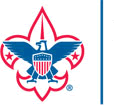Requirement 5
5. Observe and be able to identify at least 20 species of wild birds. Prepare a field notebook, making a separate entry for each species, and record the following information from your field observations and other references.
a. Note the date and time.
b. Note the location and habitat.
c. Describe the bird’s main feeding habitat and list two types of food that the bird is likely to eat.
d. Note whether the bird is a migrant or a summer, winter, or year-round resident of your area.

This is what birding is all about .. having fun in the great outdoors and trying to identify the birds around you!
There are four keys things to look for that help you narrow down what bird you are seeing. They are:
– Size & Shape
– Color Pattern
– Behavior
– Habitat
Here are four ten minute videos from the Cornell Lab of Ornithology on how to use each of these key bird identification skills:
Size & Shape
Cornell Lab Video on Size and Shape
Color Patern
Cornell Lab Video on Color Pattern
Behavior
Cornell Lab Video on Bird Behavior
Habitat
You can’t actually ID your birds for the merit badge online, but you can use your field guide and the net to prepare before you go birding.
Also, don’t let that twenty species scare you; I routinely see a dozen species at the feeders in my backyard. If I then take a half hour walk around the woods and lake across the street, I can easily see an additional dozen.
First ask your counselor or nature center for a list of the forty most common birds in your area. Now learn their “field marks” from your field guide. That way you can concentrate on the birds you’re most likely to see, instead of the eight hundred that are unlikely!
If you’re having dificulty finding twenty species, then just change habitats! You’ll find different species in your backyard, in the woods, near a lake, in a marsh or by the seashore.
Also many nature centers and Audubon societies offer “bird walks” to the public. Having experts with you the first time out can help you learn the birds quicker. You’ll also meet requirement 7 at the same time!
Another useful tool is a “birdfinding guide”. This is a book showing you the best birding places near your home and what birds are found there. It wasn’t until I discovered the birdfinding guide for my state that I really started to rack up new “lifers” (birds I hadn’t seen before). The American Birding Association Bookstore has a good assortment of birdfinding guides for sale.
Here are some links to help you:
www.nataudubon.org – Find your local chapter of National Audubon for a bird walk here.
New York Audubon – NY birders have both National Audubon chapters and a state organization!
The American Birding Association – Has great selection of birdfinding guides for sale!


